#Transport
Text
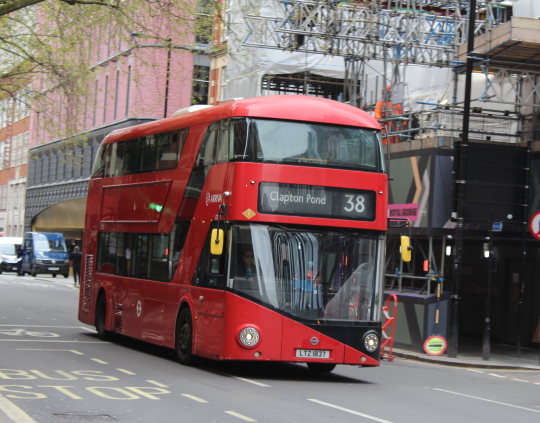
New Style Routemaster London Bus on the Famous No38 Route Clapton Pond to Victoria Bus Station and all points in between. These new buses began service in 2011.
19 notes
·
View notes
Text
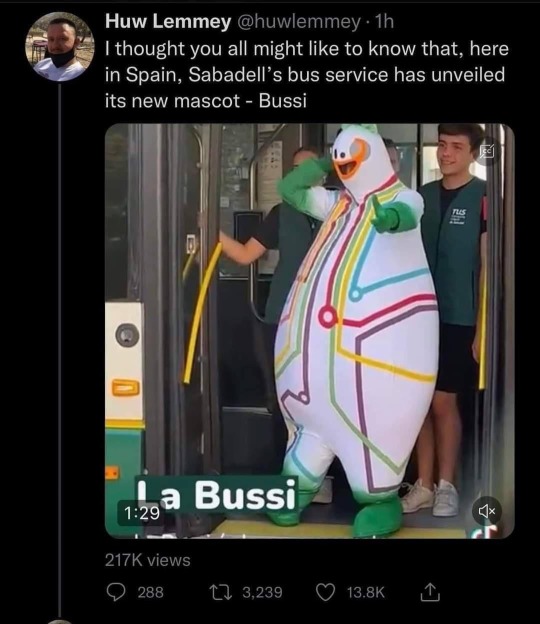

#bussi#Spain#public transport#meme#memes#lol#funny#funny meme#funny memes#cute#mascot#mascots#bus#bus meme#bus memes#transport#iT’s nOt fUnNy in oThEr LanGuagEs#shut up nerd#it’s funny to me#erhmergird anglophones on tumblr!!11!!!
31K notes
·
View notes
Text

If they're going to make people ride bikes and scooters in traffic, then it should at LEAST be legal to do the Snow Crash thing where you use a hook-shot-style harpoon to catch free rides from cars.
Urban Planning Opinion Progression [Explained]
Transcript Under the Cut
Typical urban planning opinion progression
[Each panel is connected to a point on a timeline]
Cueball: I wish there wasn't so much traffic to get into the city. They should put in more lanes.
Megan: And more parking.
Megan: Parking is so bad here.
Knit Cap: I have to go to Amsterdam for work next week. I hear they all ride bikes there.
Ponytail: Bikes are fine but people shouldn't ride them in the street! I worry I'm going to hit someone!
Cueball: It would be nice if we had better transit options!
Cueball: I tried a scooter. It was fun but I wish there were more bike paths.
Megan: It's funny how widening roads to speed up traffic makes them more dangerous to walk near, making driving more necessary and creating more traffic.
Megan: Really makes you think.
Knit Cap: Visiting the Netherlands was cool!
Knit Cap: Amsterdam is really neat.
Cueball: We've ceded so much of our land to storing and moving cars, with the rest of us tiptoeing around the edges and making drivers mad for trespassing on "their" space.
Cueball: Even though we're the ones in danger from them!
Megan: Those giant trucks with front blind spots that keep hitting kids should be illegal.
Knit Cap: We should be more like the Netherlands.
Knit Cap: They design their street to prioritize...
Cueball: The problem is car culture. It's systemic.
Cueball: I don't know if we can fix it.
Megan: People approach road planning decisions from the point of view of drivers because that's how we're used to interacting with the city, so we make choices that make it more car-friendly.
Megan: It's a vicious cycle.
Knit Cap: Netherlands! Netherlands! Netherlands! Netherlands!
Cueball: Anything that makes a city a worse place to drive in makes it a better place to live, short of scattering random tire spikes on the road.
Megan: Honestly, I think the city council should consider the tire spikes thing.
#xkcd#xkcd 2832#urban planning opinion progression#webcomics#urban planning#transport#car transport#walkable cities#bikeable cities#cars
5K notes
·
View notes
Text
Lies, damned lies, and Uber

I'm on tour with my new, nationally bestselling novel The Bezzle! Catch me TONIGHT in PHOENIX (Changing Hands, Feb 29) then Tucson (Mar 10-11), San Francisco (Mar 13), and more!

Uber lies about everything, especially money. Oh, and labour. Especially labour. And geometry. Especially geometry! But especially especially money. They constantly lie about money.
Uber are virtuosos of mendacity, but in Toronto, the company has attained a heretofore unseen hat-trick: they told a single lie that is dramatically, materially untruthful about money, labour and geometry! It's an achievement for the ages.
Here's how they did it.
For several decades, Toronto has been clobbered by the misrule of a series of far-right, clownish mayors. This was the result of former Ontario Premier Mike Harris's great gerrymander of 1998, when the city of Toronto was amalgamated with its car-dependent suburbs. This set the tone for the next quarter-century, as these outlying regions – utterly dependent on Toronto for core economic activity and massive subsidies to pay the unsustainable utility and infrastructure bills for sprawling neighborhoods of single-family homes – proceeded to gut the city they relied on.
These "conservative" mayors – the philanderer, the crackhead, the sexual predator – turned the city into a corporate playground, swapping public housing and rent controls for out-of-control real-estate speculation and trading out some of the world's best transit for total car-dependency. As part of that decay, the city rolled out the red carpet for Uber, allowing the company to put as many unlicensed taxis as they wanted on the city's streets.
Now, it's hard to overstate the dire traffic situation in Toronto. Years of neglect and underinvestment in both the roads and the transit system have left both in a state of near collapse and it's not uncommon for multiple, consecutive main arteries to shut down without notice for weeks, months, or, in a few cases, years. The proliferation of Ubers on the road – driven by desperate people trying to survive the city's cost-of-living catastrophe – has only exacerbated this problem.
Uber, of course, would dispute this. The company insists – despite all common sense and peer-reviewed research – that adding more cars to the streets alleviates traffic. This is easily disproved: there just isn't any way to swap buses, streetcars, and subways for cars. The road space needed for all those single-occupancy cars pushes everything further apart, which means we need more cars, which means more roads, which means more distance between things, and so on.
It is an undeniable fact that geometry hates cars. But geometry loathes Uber. Because Ubers have all the problems of single-occupancy vehicles, and then they have the separate problem that they just end up circling idly around the city's streets, waiting for a rider. The more Ubers there are on the road, the longer each car ends up waiting for a passenger:
https://www.sfgate.com/technology/article/Uber-Lyft-San-Francisco-pros-cons-ride-hailing-13841277.php
Anything that can't go on forever eventually stops. After years of bumbling-to-sinister municipal rule, Toronto finally reclaimed its political power and voted in a new mayor, Olivia Chow, a progressive of long tenure and great standing (I used to ring doorbells for her when she was campaigning for her city council seat). Mayor Chow announced that she was going to reclaim the city's prerogative to limit the number of Ubers on the road, ending the period of Uber's "self-regulation."
Uber, naturally, lost its shit. The company claims to be more than a (geometrically impossible) provider of convenient transportation for Torontonians, but also a provider of good jobs for working people. And to prove it, the company has promised to pay its drivers "120% of minimum wage." As I write for Ricochet, that's a whopper, even by Uber's standards:
https://ricochet.media/en/4039/uber-is-lying-again-the-company-has-no-intention-of-paying-drivers-a-living-wage
Here's the thing: Uber is only proposing to pay 120% of the minimum wage while drivers have a passenger in the vehicle. And with the number of vehicles Uber wants on the road, most drivers will be earning nothing most of the time. Factor in that unpaid time, as well as expenses for vehicles, and the average Toronto Uber driver stands to make $2.50 per hour (Canadian):
https://ridefair.ca/wp-content/uploads/2024/02/Legislated-Poverty.pdf
Now, Uber's told a lot of lies over the years. Right from the start, the company implicitly lied about what it cost to provide an Uber. For its first 12 years, Uber lost $0.41 on every dollar it brought in, lighting tens of billions in investment capital provided by the Saudi royals on fire in an effort to bankrupt rival transportation firms and disinvestment in municipal transit.
Uber then lied to retail investors about the business-case for buying its stock so that the House of Saud and other early investors could unload their stock. Uber claimed that they were on the verge of producing a self-driving car that would allow them to get rid of drivers, zero out their wage bill, and finally turn a profit. The company spent $2.5b on this, making it the most expensive Big Store in the history of cons:
https://www.theinformation.com/articles/infighting-busywork-missed-warnings-how-uber-wasted-2-5-billion-on-self-driving-cars
After years, Uber produced a "self-driving car" that could travel one half of one American mile before experiencing a potentially lethal collision. Uber quietly paid another company $400m to take this disaster off its hands:
https://www.economist.com/business/2020/12/10/why-is-uber-selling-its-autonomous-vehicle-division
The self-driving car lie was tied up in another lie – that somehow, automation could triumph over geometry. Robocabs, we were told, would travel in formations so tight that they would finally end the Red Queen's Race of more cars – more roads – more distance – more cars. That lie wormed its way into the company's IPO prospectus, which promised retail investors that profitability lay in replacing every journey – by car, cab, bike, bus, tram or train – with an Uber ride:
https://www.reuters.com/article/idUSKCN1RN2SK/
The company has been bleeding out money ever since – though you wouldn't know it by looking at its investor disclosures. Every quarter, Uber trumpets that it has finally become profitable, and every quarter, Hubert Horan dissects its balance sheets to find the accounting trick the company thought of this time. There was one quarter where Uber declared profitability by marking up the value of stock it held in Uber-like companies in other countries.
How did it get this stock? Well, Uber tried to run a business in those countries and it was such a total disaster that they had to flee the country, selling their business to a failing domestic competitor in exchange for stock in its collapsing business. Naturally, there's no market for this stock, which, in Uber-land, means you can assign any value you want to it. So that one quarter, Uber just asserted that the stock had shot up in value and voila, profit!
https://www.nakedcapitalism.com/2022/02/hubert-horan-can-uber-ever-deliver-part-twenty-nine-despite-massive-price-increases-uber-losses-top-31-billion.html
But all of those lies are as nothing to the whopper that Uber is trying to sell to Torontonians by blanketing the city in ads: the lie that by paying drivers $2.50/hour to fill the streets with more single-occupancy cars, they will turn a profit, reduce the city's traffic, and provide good jobs. Uber says it can vanquish geometry, economics and working poverty with the awesome power of narrative.
In other words, it's taking Toronto for a bunch of suckers.

If you'd like an essay-formatted version of this post to read or share, here's a link to it on pluralistic.net, my surveillance-free, ad-free, tracker-free blog:
https://pluralistic.net/2024/02/29/geometry-hates-uber/#toronto-the-gullible

Image:
Rob Sinclair (modified)
https://commons.wikimedia.org/wiki/File:Night_skyline_of_Toronto_May_2009.jpg
CC BY 2.0
https://creativecommons.org/licenses/by-sa/2.0/deed.en
#pluralistic#uber#hubert horan#fraud#toronto#geometry hates cars#urbanism#ontpoli#olivia chow#self-regulation#transport#urban planning#taxis#transit#urban theory#labor#algorithmic wage discrimination#veena dubal
901 notes
·
View notes
Text

#irish history#lgbtq community#lesbian#lgbtq#queer#nonbinary#lgbt pride#lgbtqia#sapphic#nonbinary lesbian#gay girls#ireland#irish war of independence#lesbianism#wlw#biseuxal#bisexual#transvestites#transport#transformers#transgender#trans positivity#transfem#trans women#trans man#transformation#transgirl#transmasc
15K notes
·
View notes
Photo

Little gentlemen!
17K notes
·
View notes
Text
The development of ever faster and ever more high-performing vehicles can be understood as an attempt to minimize the loss of time through technological and competitive means: whoever can afford the most horsepower gets ahead in the rat race. Since everyone else is also upgrading his or her car, the contest simply repeats itself at an ever higher level of the technological ladder. At a certain point, time-wasting speed can only be raised by exponentially increasing the risk of an accident. The competition then takes on other forms: taller, tank-like cars satisfy their passengers’ demands for security to the same degree that they endanger the lives of children, pedestrians, cyclists and passengers in smaller cars. Along with the car’s high-speed capabilities, the technical amenities of its interior become a question of status. These determine who, sitting in traffic jams caused by car crashes, can spend the lost time in most comfort.
The Imperial Mode of Living: Everyday Life and the Ecological Crisis of Capitalism
434 notes
·
View notes
Text
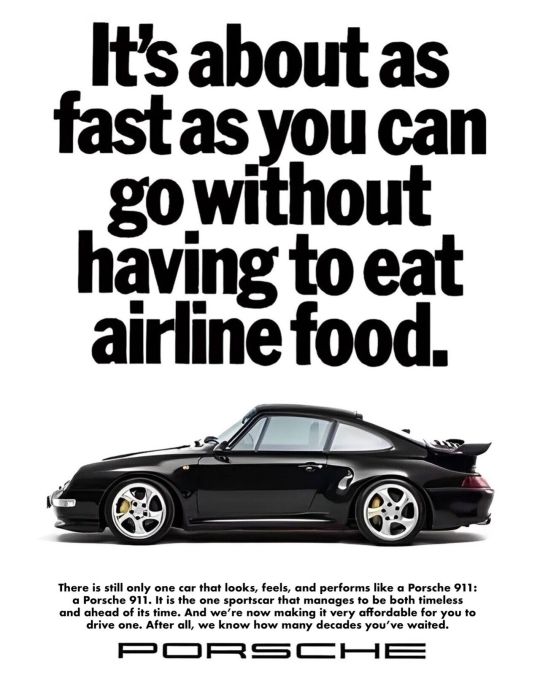
'It's about as fast as you can go without having to eat airline food.'
Porsche 911 advertisement (c. 1990).
877 notes
·
View notes
Text





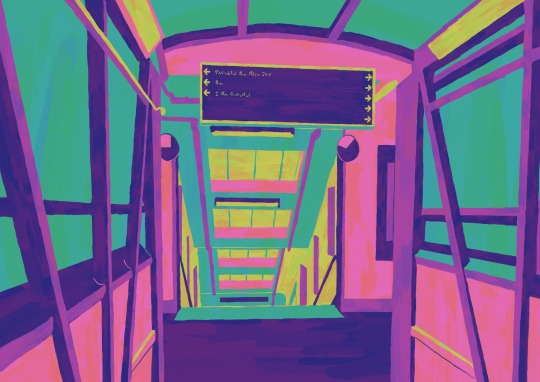
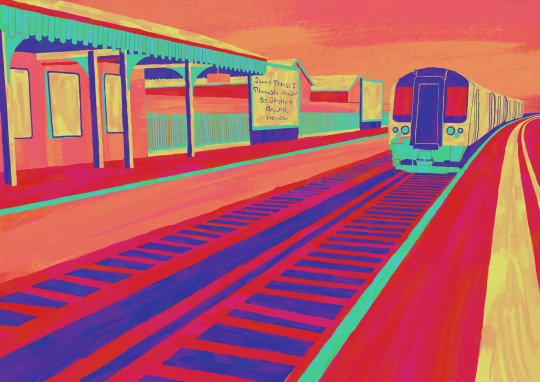
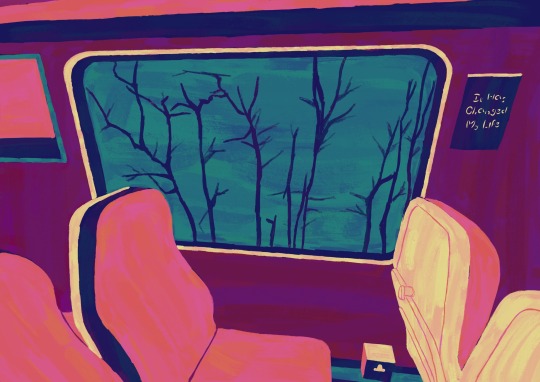
All of the train stations and trains I’ve drawn for my major project
#artists on tumblr#illustrators on tumblr#illustration#art#aesthetic#trains#travelling#train station#transport#travel#chi draws
9K notes
·
View notes
Text
333 notes
·
View notes
Text
I am extremely not going to dignify that 'walkable cities ARE ableist actually' post which has crossed my dash with a reblog, but four things to keep in mind:
'Walkable cities' is almost always a shorthand for 'cities which deprioritise cars as a mode of transport and make it possible and enjoyable to travel by other modes instead', rather than a call for everybody to walk and only walk everywhere all of the time. We live in a golden age of micromobility options, for starters. And when most people do not need to use cars, it will be much easier for people who do.
Advocacy for walkable cities and active transport often does slide right into ableism and fatphobia and this needs to be directly challenged whenever it appears (as someone who has been a cycle commuter my whole adult life and overweight for all but five minutes of my whole adult life, if I never hear "if everybody cycled we would solve the '''obesity epidemic'''!!!" again...)
AT THE SAME TIME, while this will change in degree from place to place, the Venn diagram between 'people who advocate for walkable cities' and 'people who advocate for accessible cities' has a significant degree of overlap. There's probably at least one car-centric conservative out there who genuinely advocates for accessibility by the law of averages, but it's neither a coherent nor common position. Walkability IS a form of accessibility. It is not accessibility for everybody but no single kind of accessibility is, which is why we need cities with MULTIPLE kinds.
Therefore, as with goddamn near everything in life, if you actually want to see more accessible cities...advocate for more accessible cities, and what that means for you. Going 'but there are some people who will always need cars therefore walkable cities is ableist' does exactly nothing except turn people off the idea of change. Say what you want to see. Be specific. Imagine better futures.
TL;DR - cui bono when we lock ourselves into "cars vs walkability"? you guessed it - people who benefit from the (observably harmful) car-prioritising status quo. so is this assertion always a cynical psy-op? No. Does it function as one in practice? fuck yes. be smarter.
3K notes
·
View notes
Text

239 notes
·
View notes
Text
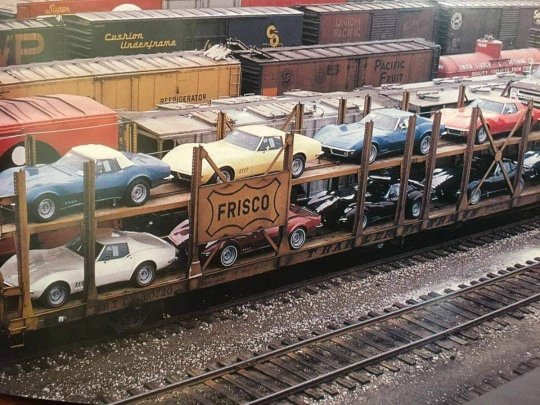
921 notes
·
View notes
Photo
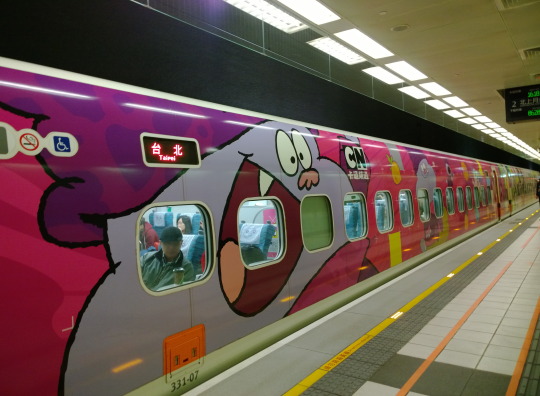
2013-10-26
1K notes
·
View notes
Text

Stunning Symmetry and Patterns Drone Photography by Costas Spathis
343 notes
·
View notes

